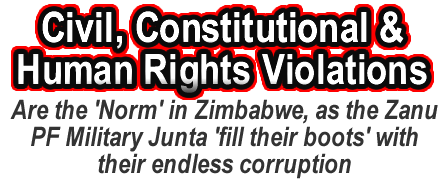 The Size of the Diaspora – GROK3 Estimation Considerations
The Size of the Diaspora – GROK3 Estimation Considerations
Estimating the size of Zimbabwe’s diaspora, particularly the figure of 900,000 often cited from the 2022 Zimbabwe National Statistics Agency (ZimStat) census, is fraught with challenges due to inconsistent data, the prevalence of informal migration, and the significant role of South Africa’s informal economy. Let’s break this down to assess the accuracy of this estimate and why South Africa’s informal sector alone might suggest a higher number.
ZimStat’s Estimate: 900,000
The ZimStat figure of 908,913 Zimbabweans living abroad, derived from the 2022 census, is based on household reports of relatives living outside the country. Of this, 773,246 were reported in South Africa, with smaller numbers in the UK (23,166), Botswana (40,000), and other nations. This data collection method—relying on family members’ responses—introduces potential undercounting, as it misses undocumented migrants, those who severed ties with home, or whose families underreported for various reasons (e.g., fear of scrutiny). The census provides a structured snapshot but struggles to capture the fluidity and opacity of migration patterns, especially in informal contexts.
South Africa’s Informal Economy and Migration
South Africa hosts the largest share of Zimbabwe’s diaspora due to proximity, historical labor ties, and economic disparities. The informal economy—estimated at 24.9% of South Africa’s GDP, or roughly $240 billion in PPP terms—employs millions, including many undocumented migrants. Zimbabweans, fleeing economic collapse (e.g., 80%+ currency depreciation in 2023) and unemployment (officially 9.3%, likely higher in reality), are drawn to this sector for jobs like street vending, construction, and domestic work, which evade formal registration.
Official South African data from the 2011 census recorded 672,308 Zimbabweans, a number experts consider outdated and conservative given subsequent migration waves, especially post-2017 after Mugabe’s ousting. Estimates from other sources vary wildly:
- The International Organization for Migration (IOM) suggests up to 3 million Zimbabweans in South Africa alone, factoring in undocumented flows.
- Academic and civil society estimates often place the figure between 1-1.5 million, with some outlier claims as high as 15 million (likely exaggerated).
- Posts on X and media anecdotes (e.g., Helen Zille’s 2019 claim of 2 million) reflect public sentiment of a larger presence, though these lack rigorous backing.
The informal economy’s scale—absorbing workers without legal documentation—means many Zimbabweans bypass official counts. For instance, the 2009-2012 Documentation of Zimbabweans Project regularized 245,000, yet many remained outside this framework due to distrust or ineligibility. With South Africa’s total immigrant population estimated at 2.9 million (2020 UN data), of which Zimbabweans are a plurality (24% per 2011 census), a figure exceeding 1 million in South Africa alone aligns with informal sector dynamics.
Comparing the Numbers
If South Africa’s Zimbabwean population is conservatively 1 million—supported by IOM and migration scholars—then ZimStat’s total diaspora estimate of 900,000 is implausible, as it implies negligible numbers elsewhere (e.g., UK, US, Australia), which contradicts other data:
- The UK’s 2021 census recorded 122,000 Zimbabweans, far above ZimStat’s 23,166.
- Australia’s 2016 census noted 34,787, against ZimStat’s 6,473.
- The US has estimates ranging from 30,000 (2017 ACS) to 100,000 (RAND, 2000), dwarfing ZimStat’s minimal figures.
 Adding these documented populations (e.g., 1 million in South Africa, 122,000 in the UK, 34,000 in Australia, 30,000+ in the US) already exceeds 1.2 million, without counting Botswana (40,000+), Canada, or smaller communities. Historical diaspora estimates range from 4-7 million (Wikipedia, citing varied sources), with 5 million commonly accepted—far beyond 900,000.
Adding these documented populations (e.g., 1 million in South Africa, 122,000 in the UK, 34,000 in Australia, 30,000+ in the US) already exceeds 1.2 million, without counting Botswana (40,000+), Canada, or smaller communities. Historical diaspora estimates range from 4-7 million (Wikipedia, citing varied sources), with 5 million commonly accepted—far beyond 900,000.
Why the Discrepancy?
- Undocumented Migration: South Africa’s porous borders and informal economy hide many Zimbabweans from official tallies. Pre-2000 labor migration to mines and farms set a precedent, amplified by post-2000 crises.
- Methodological Limits: ZimStat’s reliance on household surveys misses those who don’t report or maintain contact, a flaw acknowledged by critics like Moses Mhukahuru.
- Political Sensitivity: Underreporting may serve political narratives, minimizing the diaspora’s scale to downplay emigration’s economic drivers under ZANU-PF governance.
- Informal Economy’s Scale: South Africa’s shadow economy sustains more migrants than formal records capture, a pattern seen across SADC (e.g., Botswana’s 40,000+ Zimbabweans).
Conclusion: Accuracy Assessment
The 900,000 estimate is likely a significant undercount. South Africa’s informal economy alone—given its capacity to absorb 1-1.5 million Zimbabweans—suggests the diaspora exceeds this figure before accounting for other countries.
A more realistic range, triangulating census data, IOM estimates, and economic realities, is 2-5 million, with South Africa as the linchpin. The 900,000 figure reflects a methodological floor, not the full scope of a diaspora shaped by decades of crisis and informal survival. Without comprehensive border data or diaspora self-reporting, precision remains elusive, but the informal economy’s weight tilts the balance far above ZimStat’s claim.
